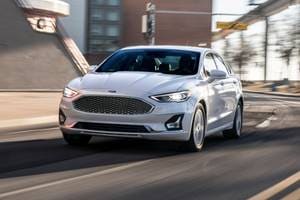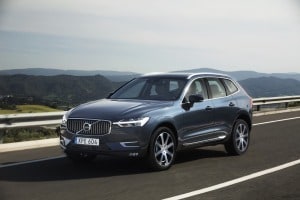Know Before You Buy
What Is a Crossover?
With increasingly rare exception, the terms "crossover" and "SUV" are used interchangeably. Or at the very least, "crossover" is used as an adjective to describe a type of SUV — specifically one built using a carlike unibody platform instead of a truck-like body on top of a frame. Indeed, the majority of today's SUVs are crossovers by the traditional definition.
Car-based vs. Truck-based
A crossover's car-based construction means it sacrifices some towing and off-roading capability compared to a traditional, truck-based SUV. But in return, it gets a bigger, more efficiently packaged interior and a lower curb weight that benefits fuel economy and agility.
Market Segment
We classify crossovers in subcompact, compact and midsize categories, with the latter broken up into subgroups based on whether they have two or three rows of seats. As you move up in size, you also typically move up in engine power, towing ability, passenger room and price. There are also luxury subgroups for many of our categories.
Price
Prices for base-model subcompacts and compacts start around $20,000. Midsize crossovers vary greatly, with base models starting in the mid-$20Ks and going all the way up to the mid-$40Ks. Luxury SUVs start around $32,000 and can top out at more than $100,000.
Performance and Fuel Economy
Compact crossovers come standard with four-cylinder engines, although turbocharged four-cylinder and V6 engines are often available as upgrades. Midsize crossovers typically come standard with V6 engines, although four-cylinders can be found as standard on some models or as options when turbocharged. The most economical subcompact and compact crossovers are now able to top 30 mpg combined, but for the most part, you should be looking for mpg figures in the mid-to-upper 20s. Midsize models should be a little lower in the 20s, although more powerful models are likely to dip into the teens.
Safety
Family shoppers should find antilock brakes, front-seat side airbags, full-length side curtain airbags, stability control and a rearview camera standard on every model. High-tech electronics that warn inattentive drivers of blind-spot intrusion and impending collisions have migrated from the luxury realm down to mainstream brands, and they are even standard in some cases. Shoppers should keep an eye out for crash test scores produced by government and the Insurance Institute for Highway Safety.
Features
Luxuries such as automatic climate control, heated seats, smartphone interfaces, navigation systems, keyless start systems and power liftgates can often be found in non-luxury SUVs. Look for them as you shop. Family-friendly features we like include rear-seat entertainment systems, flat-folding third-row seats, special storage bins and rear seats that slide and/or recline.
Interior
Most subcompacts and compacts provide enough rear legroom for full-size adults, with several offering fore-and-aft seat adjustments to extend either passenger space or cargo capacity. The same goes for larger SUVs, but these wider vehicles are more likely to accommodate three-across seating. Most larger SUVs offer a third-row seat for additional passenger capacity. Such seats are generally best suited for kids, but several have third-row seats that can comfortably fit adults.
Cargo Space
Every crossover has folding rear seats that you can use to free up extra cargo capacity. Look out for models that let you do this remotely using levers or power-operated mechanisms in the cargo area. Increasingly, crossovers feature sleekly raked rooflines that create more dynamic styling but decrease the vehicle's ability to carry bulkier items. Besides looking at the cargo area for yourself, examine differences in each model's maximum cargo capacity. The best subcompacts should have around 50 cubic feet in cargo space, compacts and five-seat midsize models about 70 cubic feet, and three-row midsizers about 85 to 90 cubic feet.
2WD/4WD/AWD
Two-wheel drive (2WD) means that only the front or rear wheels provide power to the vehicle. Drivers who rarely see bad weather should look for two-wheel drive because the vehicle will be cheaper to buy and to fuel. Four-wheel-drive vehicles allow the driver to select either two- or four-wheel drive, and the four-wheel-drive (4WD) system sometimes features dual-range gearing for even more traction and mobility while off-roading. However, most crossovers offer all-wheel drive (AWD), which automatically distributes power in varying degrees to the wheels with the most traction and is typically best suited to all-weather driving rather than pure off-roading. Many AWD systems are part-time, meaning they operate in 2WD until the vehicle detects wheel slippage and redistributes power accordingly.
Cost to Own
Because compact crossovers are mostly smaller, lighter and have less complex all-wheel-drive systems, maintenance and fuel costs are usually lower than those of traditional SUVs. With larger size and larger engines, midsize sport-utes by and large get worse mileage and are comparatively more expensive to insure than compacts.





